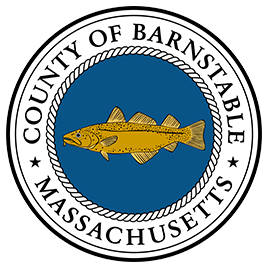Zoning is a powerful regulatory tool that towns can use to encourage a variety of housing types that are consistent with their community’s vision. Zoning can also create barriers to affordable and multi-family housing development or redevelopment, either by prohibiting housing other than single-family dwellings; establishing dimensional requirements (e.g., minimum lot size) that make development of multi-unit dwellings infeasible; or requiring special permit procedures that add cost and unpredictability to the review process. Changing zoning to allow and support creation of affordable and attainable housing options is a key strategy communities can pursue. To support implementation of the Regional Housing Strategy, the Cape Cod Commission developed several model bylaws focused on increasing attainable housing opportunities in the region.
The model bylaws are intended to be models and examples for communities as they look to amend their zoning, providing a bylaw framework they can adapt to suit their individual situation. Each model bylaw is accompanied by a guide that helps explain the reasoning behind each bylaw’s provisions. The Commission also provides a Word version of each bylaw to make it easier for towns to adapt the model to their specific needs. As always, towns should consult with town counsel during development of any zoning changes.
YEAR-ROUND HOUSING INCENTIVE MODEL BYLAW
This bylaw incentivizes the production of year-round housing, including year-round ownership and rental options. Due to the financial benefits of providing vacation housing (whether second homes, vacation rentals, or otherwise), housing for year-round residents can be difficult to access. This is especially true for renter households, who struggle to find options for year-round leases. The proposed incentives in the model bylaw include a density bonus, new dimensional standards, reduced parking requirements, and by-right permitting. Towns may adopt all of the incentives together or utilize them individually to make year-round housing development more financially viable. A model year-round deed restriction is also available and can be used in conjunction with this model bylaw.
- Year-round Housing Incentive Model Bylaw: Model Bylaw (PDF) | Bylaw and Guide | Model Bylaw (Word)
DESIGN-DRIVEN HOUSING MODEL BYLAW
This model bylaw takes a design-driven approach, regulating elements of development that directly relate to building form and site design for housing (re)development on Cape Cod. The bylaw establishes appropriate dimensional regulations in a less complex version of “form-based code.” Implementers can think of this as “form-based lite,” regulating only the most impactful design elements. The model bylaw creates a new zoning district that aims to increase the supply of diverse and attainable housing options, encourage development in areas served by infrastructure and amenities, complement existing villages and neighborhoods, encourage adaptive reuse, and provide a more walkable mixed-use environment on commercial corridors. This model bylaw builds on the multifamily housing design guidelines also developed as part of the Regional Housing Strategy.
- Design-Driven Housing Model Bylaw: Model Bylaw (PDF) | Bylaw and Guide | Model Bylaw (Word)
SEASONAL WORKER DORMITORY MODEL BYLAW
Seasonal workers are a critical component of the Cape Cod economy, but they face housing challenges, and their housing demands can put pressure on housing availability for year-round renters. By allowing development of group quarters for seasonal workers, this model bylaw aims to encourage provision of safe and stable housing for seasonal employees and hence alleviate some of the pressures for year-round residents. The design of development drives the possible options and applications of the model bylaw and towns can choose which scales of development or bylaw structures would best suit their community's needs and opportunities.
- Seasonal Worker Dormitory Model Bylaw: Model Bylaw (PDF) | Bylaw and Guide | Model Bylaw (Word)
SINGLE-FAMILY TO MULTIFAMILY CONVERSION MODEL BYLAW
The vast majority of Cape Cod's housing stock is detached single-family homes. This model bylaw provides zoning that would enable conversion of some single-family homes to multifamily homes. Conversions can increase the housing supply on the Cape within the existing housing stock, maintaining the characteristic aesthetic qualities of the region’s housing, while increasing the variety and total quantity of housing available. Conversions also have the potential to add housing units without increasing the number of bedrooms, and thus while remaining within the current parameters for permitted wastewater systems.
- Single-family to Multifamily Conversion Model Bylaw: Model Bylaw (PDF) | Bylaw and Guide | Model Bylaw (Word)
Additionally, the Cape Cod Commission has developed a mixed-use model bylaw and accessory dwelling unit model bylaw, both of which can also support the provision of increased affordable and attainable housing opportunities in the region.
Contact
-
Chloe Schaeferchloe.schaefer@capecodcommission.org
-
Martha Hevenormhevenor@capecodcommission.org
-
Sarah Korjeffskorjeff@capecodcommission.org
